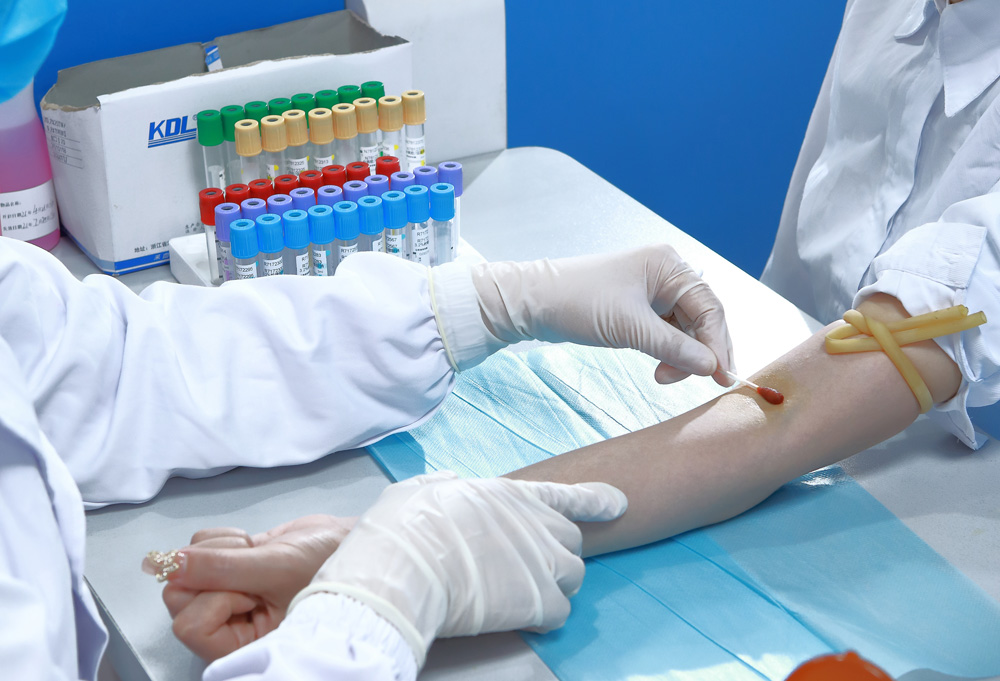Because of its special blood collection design, vacuum blood collection vessels have brought many conveniences to clinics and patients, and have been widely used in clinics. However, in the process of use, we often encounter some problems that lead to blood collection failure. Combined with our own work experience, we summarize some solutions to common problems of vacuum blood collection system, and exchange and learn with you.

Negative pressure vacuum blood collection vessel and soft connection bidirectional venous blood collection needle.
Select the vein - tie the pressure belt - disinfect - take the venous blood collection needle for puncture - return the blood to connect to the vacuum blood collection vessel - loosen the pressure belt - bend the hose of the blood collection needle - pull out the needle - separate the puncture needle from the vacuum tube - mix the blood.
If there is no blood return after venipuncture. First of all, confirm whether the puncture is successful or not and look for "hollowness". You can also gently press the top of the blood vessel with your fingers to increase the pressure of the blood vessel. At the same time, ask the patient to clench and loosen his fists regularly to promote the outflow of blood. Adjust the angle of the blood collection needle to prevent the inclined plane of the needle from clinging to the blood vessel wall, resulting in poor blood suction of the vacuum blood collection vessel.
After the above steps, if the blood cannot flow into the vacuum tube smoothly, it can be preliminarily judged that the vacuum tube has insufficient negative pressure, and it can be replaced with a spare vacuum tube without venipuncture. When the patient's blood pressure is too low or the blood viscosity is too high, poor blood absorption can also occur, which should be paid more attention to. In addition, do not loosen the rubber cover of the test tube before using the disposable vacuum blood collection vessel to prevent poor blood return caused by insufficient negative pressure.
After the vacuum tube is separated, the rubber sleeve on the blood collection needle can be automatically restored to wrap the needle to avoid blood pollution and puncture caused by needle exposure.
However, as it is inevitable that the rubber sleeve of multi-tube blood collection cannot be restored, the blood collection hose should be bent before separating the vacuum tube to prevent the residual blood in the hose from flowing out. Then separate the vacuum tube from the blood sampling needle, which can effectively avoid the pollution caused by blood leakage.
In order to avoid hemolysis of the sample in the vacuum blood collection vessel, when connecting the blood collection needle and the vacuum tube, it is best to insert the needle at a 45 ° angle with the inner wall of the vacuum tube, and the blood slowly flows into the bottom of the tube through the tube wall, rather than rushing vertically into the bottom of the tube.
When the blood collection volume is insufficient, in order to avoid excessive negative pressure in the vacuum tube, which leads to blood cell rupture and hemolysis, the rubber cover head of the vacuum tube can be opened and then covered, so that the pressure inside and outside the tube can be consistent, which can effectively prevent hemolysis.
When encountering blood samples that need anticoagulation after blood collection, the vacuum tube should be reversed slowly for several times in time to mix the blood with anticoagulant to avoid blood agglutination.
Gongdong Medical is an OEM medical blood tube factory in China. Welcome to contact.